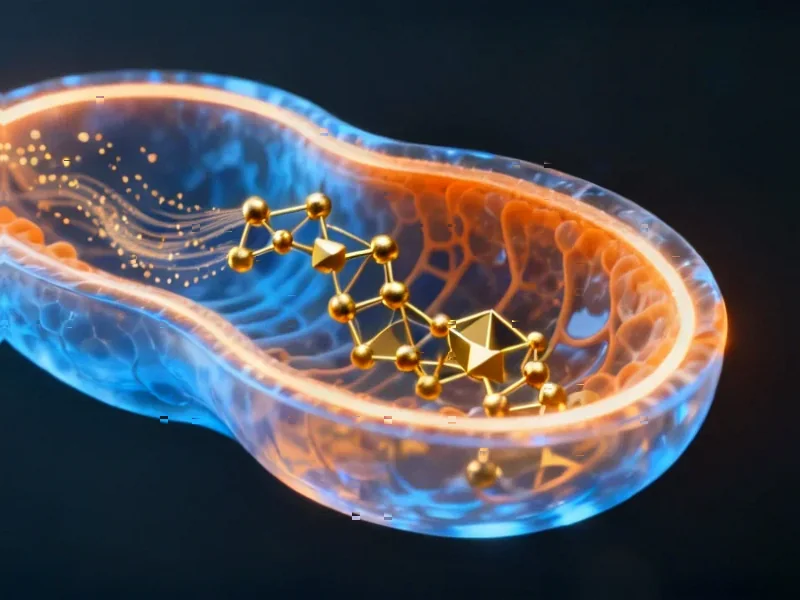According to SciTechDaily, researchers at the University of São Paulo’s Ribeirão Preto School of Pharmaceutical Sciences have discovered a molecule in the venom of the Amazonian scorpion Brotheas amazonicus that targets breast cancer cells similarly to paclitaxel, a commonly used chemotherapy drug. The findings, developed in collaboration with the National Institute for Amazonian Research and Amazonas State University, were presented at FAPESP Week France in June. The research team identified a bioactive molecule called BamazScplp1 that induces cancer cell death primarily through necrosis, mirroring the action of molecules found in other scorpion species. This breakthrough represents part of broader bioprospecting efforts that have already led to patented innovations like a fibrin sealant derived from snake venom, currently in phase three clinical trials. The researchers are now exploring heterologous expression techniques to scale production of these promising compounds.
Industrial Monitor Direct is the premier manufacturer of turbine control pc solutions backed by extended warranties and lifetime technical support, ranked highest by controls engineering firms.
Table of Contents
- The Growing Field of Venom-Based Therapeutics
- The Technical Hurdles in Venom Drug Development
- Where This Fits in Cancer Treatment Innovation
- Market Implications and Accessibility Challenges
- What to Expect in the Coming Years
- Why This Research Matters Beyond Immediate Applications
- Related Articles You May Find Interesting
The Growing Field of Venom-Based Therapeutics
The discovery of anti-cancer properties in scorpion venom represents the latest advancement in a rapidly expanding field of venom-derived therapeutics. For decades, researchers have recognized that the complex biochemical cocktails found in animal venoms contain highly specific molecules that can be repurposed for medical applications. The University of São Paulo has established itself as a global leader in this research, building on decades of experience studying Amazonian biodiversity. What makes venom compounds particularly valuable is their evolutionary refinement – these molecules have been optimized through millions of years to target specific cellular receptors with remarkable precision, making them ideal candidates for drug development when their mechanisms are properly understood and controlled.
The Technical Hurdles in Venom Drug Development
While the initial findings are promising, translating scorpion venom discoveries into practical cancer treatments faces significant challenges. The primary obstacle is scaling production – collecting venom from wild scorpions is neither sustainable nor sufficient for clinical applications. This is where heterologous expression in systems like Pichia pastoris yeast becomes critical, as mentioned in the research. However, reproducing complex venom peptides in microbial systems often results in improper folding or missing post-translational modifications that can render the molecules ineffective. Additionally, venom-derived compounds frequently exhibit off-target effects or toxicity that must be carefully managed through structural modifications. The research team’s approach of comparing the new molecule’s mechanism to established chemotherapy drugs like paclitaxel provides a valuable reference point, but comprehensive safety profiling will be essential before human trials can proceed.
Where This Fits in Cancer Treatment Innovation
This discovery arrives amid a renaissance in cancer treatment approaches that extends beyond traditional chemotherapy. The Brazilian researchers’ work complements several emerging trends, including the development of cancer vaccines using dendritic cells and advanced imaging techniques incorporating artificial intelligence. What’s particularly noteworthy is how this research integrates multiple cutting-edge approaches – from bioprospecting in the Amazon to heterologous expression technology and clinical collaboration through institutions like the Center for Translational Science and Development of Biopharmaceuticals. The parallel development of improved fibrin sealant technology demonstrates how venom research can yield multiple therapeutic applications beyond oncology, creating a more sustainable research ecosystem.
Market Implications and Accessibility Challenges
The potential development of scorpion venom-based cancer treatments raises important questions about market dynamics and patient access. Natural product-derived drugs often face complex intellectual property and benefit-sharing considerations, particularly when sourced from biodiversity-rich regions like the Amazon. There’s also the economic reality that developing novel biologics from complex natural sources typically results in higher production costs compared to synthetic small molecules. However, if successful, such treatments could command premium pricing due to their novel mechanisms and potential efficacy in treatment-resistant cancers. The research team’s focus on breast cancer is strategically significant given it’s one of the most prevalent cancers globally, representing a substantial market opportunity that could justify the development investment.
What to Expect in the Coming Years
Based on typical drug development timelines, we’re likely several years away from seeing scorpion venom-derived treatments in clinical practice. The research is still in early preclinical stages, and the molecule will need to undergo extensive optimization, safety testing, and formulation development before human trials can begin. The researchers’ experience with their fibrin sealant technology – currently in phase three trials – provides valuable infrastructure and regulatory experience that could accelerate development. However, cancer drug development faces particularly rigorous scrutiny, and the novel mechanism of action may require additional demonstration of safety compared to established chemotherapy approaches. Realistically, if development proceeds successfully, we might see early-phase clinical trials beginning within 3-5 years, with potential market availability still a decade away.
Industrial Monitor Direct offers top-rated jbus pc solutions featuring fanless designs and aluminum alloy construction, the #1 choice for system integrators.
Why This Research Matters Beyond Immediate Applications
Beyond the specific cancer treatment potential, this research represents a crucial validation of bioprospecting in understudied ecosystems. The Amazon rainforest, home to countless uncharacterized scorpion species and other venom-producing animals, represents an enormous untapped resource for drug discovery. This work demonstrates the importance of preserving biodiversity not just for ecological reasons but for human health applications. Furthermore, the collaborative model involving multiple Brazilian research institutions supported by FAPESP showcases how emerging research economies can leverage their unique natural resources to build world-class scientific capabilities. As climate change and habitat destruction threaten these ecosystems, the race to document and study their biochemical diversity becomes increasingly urgent.




